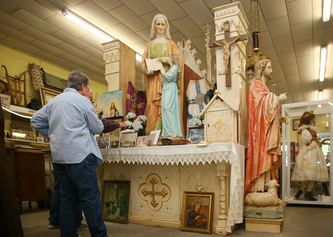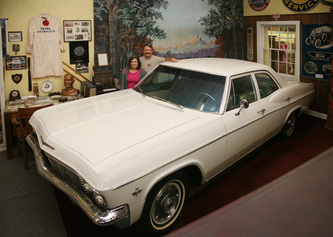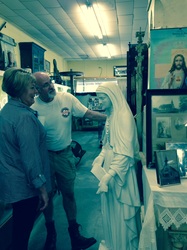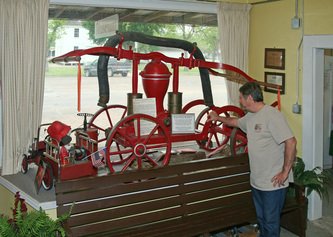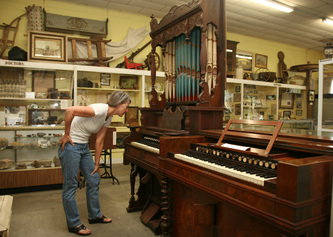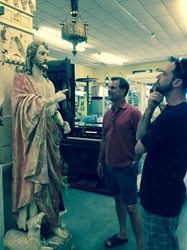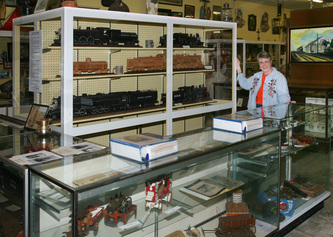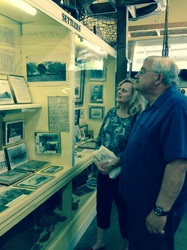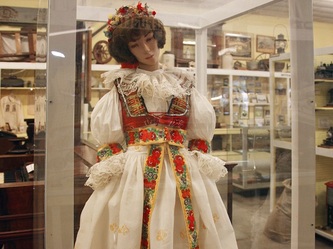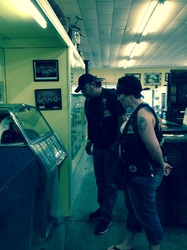Archiving and Educating
Our Archival Programs include Acquisitions,
Preservation, Oral History Collection, and Research.
Our Educational Programs include Permanent and Rotating Exhibits, Demonstrations, and Genealogy.
Our Educational Programs include Permanent and Rotating Exhibits, Demonstrations, and Genealogy.
Teddy's Trains Exhibit - One of our Permanent Exhibits
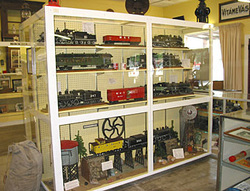
The museum has become the permanent home for Teddy Schultz's Handmade Train Replicas. As a young boy in the twenties, Teddy was impressed by the Katy Railroad which crossed the farm road about a quarter mile from his home. At first he built model trains from store bought kits, but Teddy became intrigued with the idea of building trains from his own patterns.
Teddy farmed and raised livestock, but in his spare time he built trains in a wood shop next to his house. Much of the machinery was improvised to fit his needs. At sixteen, he converted a sewing machine into a jigsaw. A washing machine motor powered his lathe. Fruit crates provided the wood for his early train creations.
In 1950 he began to build authentic replicas of historic trains. He began by researching the train, then drawing it to scale, 1/2 inch per foot. Each car took about one year to build, because each has 400 to 800 parts made entirely of white pine and reeds. Teddy did not use nails or metal. He put his trains together with wood pegs and glue. The wheels were made on a small lathe and rolled on hardwood bearings. The handrails, which are the width of a needle, are made of reed twirled in sandpaper. Valve mechanisms might have thirty moving parts. The doors slide. He painted the trains by taking them apart, hand painting each piece with a brush, reassembling them, then spraying and decorating.
Teddy's trains have been displayed at Neiman-Marcus, county fairs and other museums. He and his trains were even filmed by The Country Reporter. After he passed away in January 2007, the Fayetteville Area Heritage Museum was proud to have been chosen to house Teddy's legacy.
Teddy farmed and raised livestock, but in his spare time he built trains in a wood shop next to his house. Much of the machinery was improvised to fit his needs. At sixteen, he converted a sewing machine into a jigsaw. A washing machine motor powered his lathe. Fruit crates provided the wood for his early train creations.
In 1950 he began to build authentic replicas of historic trains. He began by researching the train, then drawing it to scale, 1/2 inch per foot. Each car took about one year to build, because each has 400 to 800 parts made entirely of white pine and reeds. Teddy did not use nails or metal. He put his trains together with wood pegs and glue. The wheels were made on a small lathe and rolled on hardwood bearings. The handrails, which are the width of a needle, are made of reed twirled in sandpaper. Valve mechanisms might have thirty moving parts. The doors slide. He painted the trains by taking them apart, hand painting each piece with a brush, reassembling them, then spraying and decorating.
Teddy's trains have been displayed at Neiman-Marcus, county fairs and other museums. He and his trains were even filmed by The Country Reporter. After he passed away in January 2007, the Fayetteville Area Heritage Museum was proud to have been chosen to house Teddy's legacy.
Gallery of Exhibits
[[i:google_analytics.js]]

